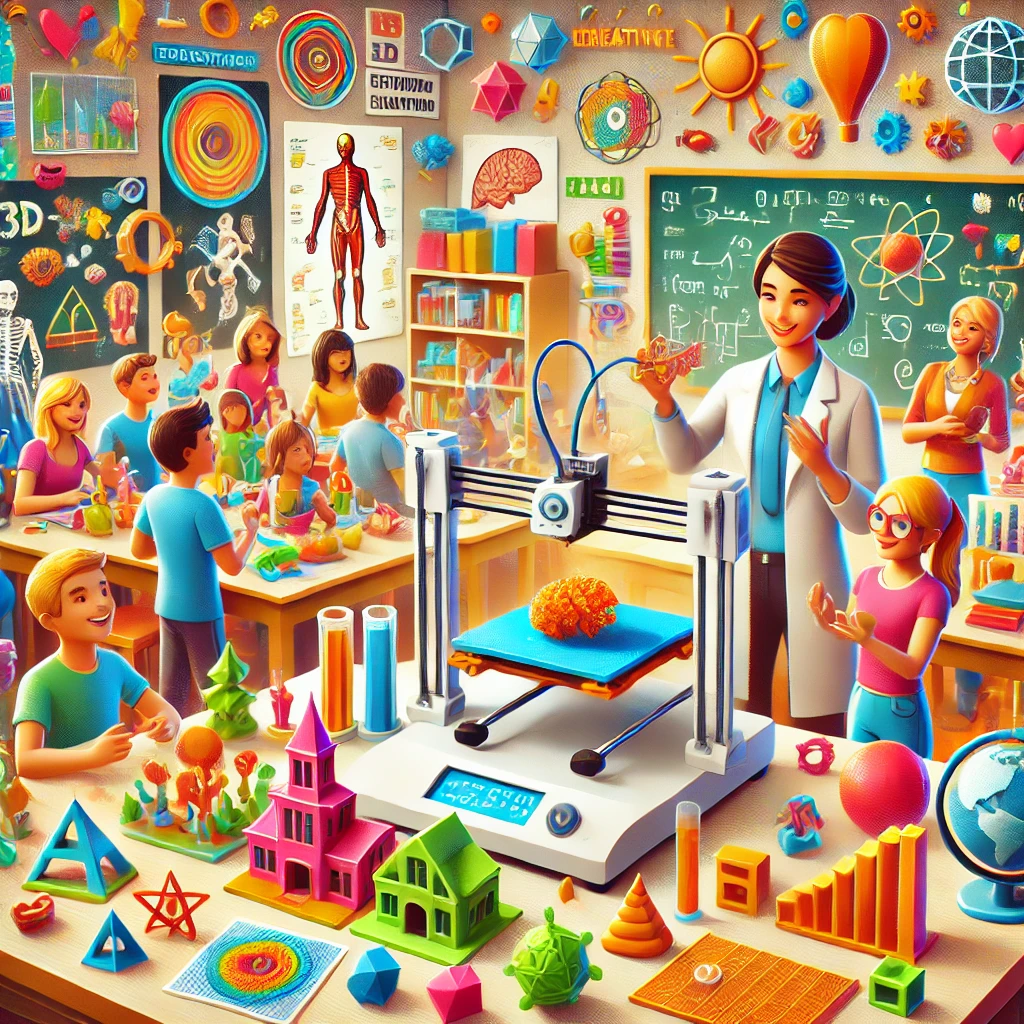Unleash the power of creativity in the classroom with 3D printers like the Creality K1C! These innovative machines are revolutionizing education by immersing students in the exciting worlds of design, engineering, and manufacturing. Dive into a realm of endless possibilities where learning becomes an adventure, and students can transform their ideas into tangible creations!

In classrooms across the globe, educators are embracing an innovation that feels almost magical: 3D printing. This groundbreaking technology has found its way into schools and universities, where it is opening up new possibilities for students to explore design, engineering, and manufacturing in ways that were once limited to professionals. With a tool as versatile and exciting as a 3D printer, students are no longer confined to learning from books or digital screens—they can bring their imaginations to life, creating tangible objects that represent their understanding of complex concepts.
Models like the Creality K1C have become particularly popular for educational use. Designed with beginners in mind, this 3D printer simplifies the process while delivering professional-quality results. Let’s dive into how 3D printing is transforming education, one layer at a time.
Hands-On Learning That Makes Ideas Real
Imagine a student designing a model of a bridge for a civil engineering project. In the past, this would have been limited to drawings or, at best, a rough handmade prototype. With a 3D printer, however, that same student can create a precise, scaled-down model of the bridge, examining its structure and functionality in the real world. This process doesn’t just make learning more engaging—it also makes it more effective.
3D printers allow students to turn their ideas into reality, which fosters a deeper understanding of subjects like geometry, physics, and even art. By working on projects that result in tangible outcomes, students gain confidence in their problem-solving abilities and are more likely to retain what they’ve learned. It’s one thing to read about engineering principles in a textbook, but it’s entirely different to see them in action through a real-world application.
Developing Critical Skills for the Future
Education isn’t just about absorbing knowledge; it’s about preparing students for the challenges of tomorrow. As industries increasingly rely on advanced manufacturing and digital technologies, skills like computer-aided design (CAD) and rapid prototyping are becoming more valuable. By incorporating 3D printing into the curriculum, schools can equip students with these in-demand skills, giving them a head start in fields like engineering, architecture, healthcare, and even entertainment.
The Creality K1C, for instance, is perfect for beginners because it strikes a balance between ease of use and advanced capabilities. Students can learn the basics of operating a 3D printer and designing models while gaining exposure to concepts that professionals use daily. Over time, these experiences can spark interest in STEM fields, inspiring students to pursue careers they might never have considered.
Why the Creality K1C Shines in the Classroom
Not all 3D printers are created equal, and when it comes to education, the right tools can make all the difference. The Creality K1C has been designed with schools in mind, offering features that make it both accessible and powerful. For example, its intuitive interface ensures that even those new to 3D printing can get started with minimal training. Meanwhile, its speed and precision allow educators to integrate it seamlessly into lesson plans without worrying about long print times or errors.
One of the standout features of the Creality K1C is its versatility. From simple keychains to complex mechanical parts, this printer can handle a wide range of projects, accommodating students of all skill levels. Its reliability also means that educators can focus on teaching rather than troubleshooting, creating a more productive and enjoyable experience for everyone involved.
Fostering Creativity and Engagement
3D printers are more than just tools; they are gateways to creativity. For students, the ability to design and print their own objects is empowering. It transforms the classroom into a space of limitless potential, where ideas aren’t confined to the pages of a notebook but can take physical form. This sense of possibility encourages students to think outside the box, experiment with new ideas, and collaborate with their peers.
Moreover, 3D printing makes learning more interactive. Instead of passively listening to lectures or completing worksheets, students become active participants in their education. They take ownership of their projects, which not only boosts their motivation but also makes the material more memorable. As students see their creations come to life, they develop a genuine enthusiasm for learning that extends far beyond the classroom.
A Bright Future with 3D Printing
As 3D printers continue to gain popularity in educational settings, their impact is becoming increasingly clear. Tools like the Creality K1C are not just teaching students about design, engineering, and manufacturing—they are also instilling confidence, fostering creativity, and preparing the next generation for success in a rapidly changing world. By bringing cutting-edge technology into the classroom, educators are giving their students a powerful gift: the ability to dream, create, and innovate.
If you’re ready to explore the possibilities of 3D printing in education, the Creality K1C is an excellent place to start. Its beginner-friendly design and robust capabilities make it a valuable addition to any classroom. Don’t just teach your students about the future—help them build it.



